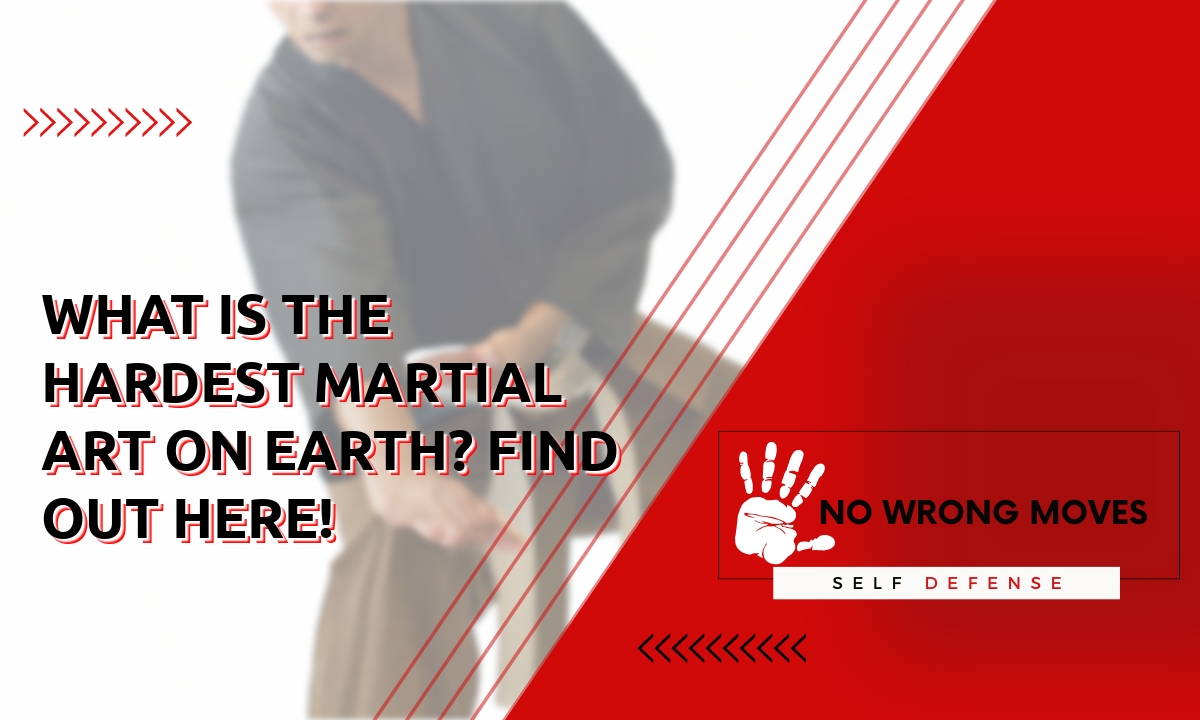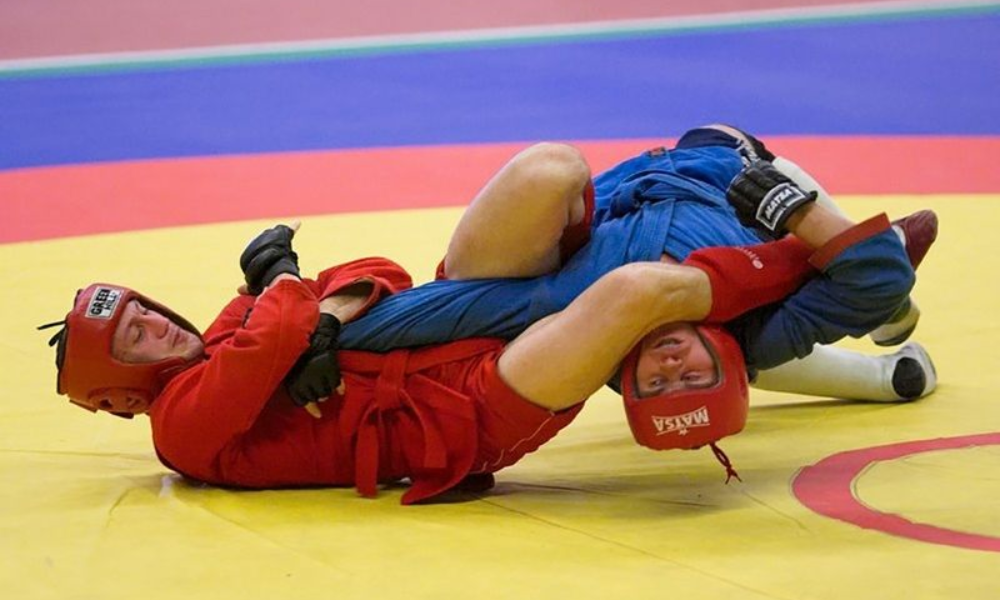
Martial arts are nuanced and diverse. You'll find lots of variety between them all: some are known for the agility they require, while others emphasize brute strength. Some rely more on physical conditioning, while others require stringent technical ability.
But when you factor all of these together, which ones end up as the hardest martial arts of all? That's tough to say, of course--but that's not something we can't figure out. If you're as eager to figure out the answer to this question as we are, then read on!
Wrestling
To the uninitiated, putting wrestling here might seem like a joke. After all, people commonly associate it with rigged matches like those from the WWE, built more for entertainment than actual martial prowess.
But the truth of the matter is that wrestling is a complex, multi-faceted combat sport that demands unwavering dedication and relentless physicality.
At its core, it involves two athletes grappling with each other in a constant battle of strength, agility, and strategy. Its intricacies, however, extend far beyond its basic premise.
One of the most critical aspects of wrestling is the ability to control one's opponent through a combination of holds, throws, and takedowns. Noticing a pattern here? Yeah, a lot of the most difficult martial arts tend to evolve a lot of grappling. It's just not an easy thing to do!
But still, achieving this level of mastery requires not only exceptional physical conditioning but also a keen understanding of human anatomy and biomechanics.
And despite the slow, almost flamboyant nature of the wrestling matches we've grown accustomed to, wrestlers must actually possess razor-sharp reflexes and lightning-fast reaction times, at least if they want any hope of anticipating and counter their opponent's moves.
These hefty demands that require the highest level of physical, mental, and emotional commitment are part of why wrestling is one of the hardest martial arts to learn. Those who choose to pursue it will require grit, will, and determination if they want to succeed.
Judo

You knew this would show up here! Judo is a martial art that originated in Japan in the late 19th century. It was founded by Jigoro Kano, a martial arts educator and enthusiast.
The sport itself predominantly involves throws, grapples, and the like, and is primarily used for defense. It shares many similarities with its sister sport, Brazilian jiu-jitsu--which we'll be talking about in just a bit!--except it also places a huge emphasis on throwing and point striking.
There are three main types of techniques, which are all fairly self-explanatory:
- Nage-waza, throwing techniques, which involve using your opponent's momentum against them;
- Katame-waza, or grappling techniques, where opponents are immobilized and forced into submission, and;
- Atemi-waza, or point striking techniques, where precise strikes are aimed at crucial areas of the body.
Atemi-waza, while a crucial part of BJJ, is somewhat at odds with what judo tries to teach--and we haven't even mentioned how it can be dangerous at times--and so it's often made illegal in tournaments.
Judo's ranking system is fairly straightforward: you start with a white belt, then you work your way up to a yellow, then an orange, then a green, all the way over to black.
Overall, it's a great, fun, and interesting way to stay physically fit--and it's a great for making friends too!
But it is still also one of the hardest martial arts to learn at the end of the day. So if you decide to take it, you'd best be ready for a heck of a lot of pain and discomfort down the line. Don't worry though, it'll be worth it!
Sambo

Sambo is a Russian martial art that has gained popularity worldwide for its unique blend of grappling and striking techniques. I know, there we go again with the holds and the takedowns!
They do tend to overlap a fair bit though: sambo draws inspiration from various other martial arts, such as judo, BJJ, and wrestling.
Developed in the early 20th century as a form of hand-to-hand combat for the Soviet Red Army, sambo has since evolved into both a competitive sport and a renowned form of self-defense training.
The name itself, "sambo," is actually an acronym: "samozashchita bez oruzhiya," which translates to "self-defense without weapons." The first national sambo championship was held in 1938, which just so happens to also be when it was fully unveiled to the public.
There are more than a few styles here, the most common and popular one being sport sambo. It's a competitive spin on the martial art that's recognized by the Olympics, and it's arguably the most structured of them all, with scoring systems based on throwing your opponents and pinning them.
Then there's combat sambo, which is what the Russian military uses for self-defense and hand-to-hand combat scenarios. It's a tad bit more brutal, as you can imagine, but also more effective.
There's freestyle sambo too, and it does a full 180 in contrast to its combat variant, allowing a much wider range of techniques.
It isn't entirely worse for self-defense either, as it teaches you how to handle scenarios that are a bit more true to life, such as attacks while outnumbered or against armed foes.
Overall, its efficiency and effectiveness have helped cement its rising popularity, to the point that a governing body was required to help support the martial art globally. And that's just what happened: by 1985, the International Amateur Sambo Federation, or the FIAS, was formed.
Brazilian Jiu-Jitsu
We're not going to say that we saved the best for last, but we are going to argue that we saved the last for the hardest!
Brazilian Jiu-Jitsu, commonly abbreviated as BJJ, is a highly complex, highly technical martial art that originated in Brazil.
Focusing primarily on grappling and ground fighting techniques, BJJ is rooted in the principles of leverage, submission, and weight distribution, and when put diligently together, they can allow a smaller opponent to overpower a far larger, stronger one.
Just like other martial arts, you'll be encountering a ranking system, where divisions are specified in the form of colored belts.
Beginners start with the white belt, then work their way up to the blue, then purple, then brown, until they eventually reach the black belt, which is the highest rank that the average jujitsuka can reasonably attain.
A worthy title, for sure, but it takes years upon years of dedicated training and hard work to achieve.
This form of martial art was developed by the Gracie family in the early 20th century, and it gained worldwide attention when Royce Gracie won the first ever Ultimate Fighting Championship tournament (as in, the UFC itself, mind you) in 1993.
BJJ has soared in popularity ever since then, and it now stands as an integral part of the martial arts community.
As a jujitsuka, your objective is to take the opponent down to the ground and gain a dominant position. Once you've attained that, you're expected to force your opponent to submit somehow, such as through a choke or a joint lock.
It's a little ironic that Brazilian jiu-jitsu would show up in a list like this, given that it's often called a "gentle art." Truth be told, the same thing that's given BJJ this moniker also happens to be the same thing that makes it such a difficult sport to learn: it lacks striking.
I know, I know, that's counter-intuitive: if a sport lacked specific moves, wouldn't that make it easier? You'd have less things to learn after all.
The issue is it makes up for a lack of striking with a massive emphasis on ground fighting. You will be rolling and grappling quite a fair lot in BJJ, and it will involve a significant amount of moves that cannot be learned easily or mastered quickly.
And we're serious about that. There are hundreds of moves in BJJ, possibly more than that if we're really looking into the technicalities, and experienced jujitsukas often realize that it's impossible to learn everything, even if they were given an entire lifetime.
That's why, in our opinion, BJJ is hands-down the most difficult martial art to learn. This combination of incredible physical intensity, on top of the need for firm discipline and excellent mental acuity, means it's just not the kind of sport that will ever be easy.
But that's something jujitsukas aren't just okay with, but are actively proud of. They find themselves enjoying each session more and more because, although BJJ never gets easier, they can cope because they do get stronger.
Conclusion
So there you have it! This is by no means an extensive list. There are tons of martial arts out there that are just as difficult, if not more than, in their own ways.
Nor is this an objective list. Everyone has their own personal set of strengths, experiences, goals, and opinions, and all of these influence just how difficult a martial art will be for them.
So if you find your favorite sport here and suddenly feel discouraged, don't worry! There's a chance it may not actually be that hard for you. And if is, then you'd be doing your best at something you find incredibly difficult--and that's something to be proud of.
You've looked into the hardest martial arts, but now what about the deadliest? If you're eager to learn about that, don't worry, we were too--here's what we've found!
[author-box-jpx-fitness]
